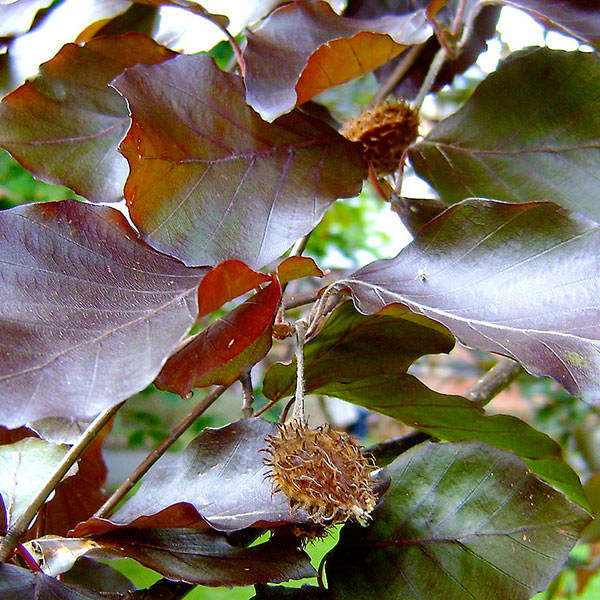Purple River Beech (Fagus sylvatica 'Riversii')
The Purple River Beech is a cultivar of the European Beech species. The tree grows slightly smaller than the typical European Beech and has large, purple, glossy leaves. During the late summer and into the fall, the leaves fade to a purple-green color, ultimately changing to a copper color in the fall.
Family: Fagaceae (Beech)
Characteristics: The 5-inch-long leaves are ovate, slightly wavy, and deep purple. In the fall, leaves turn a copper color. In April-May, small yellow-green flowers begin to bloom. Male flowers are drooping and long-stemmed and female flowers appear as short spikes. The female flowers give way to triangular nuts which are encased by a spiky outer shell. Beechnuts ripen in the fall and are edible. Bark is smooth and gray. This tree is a very dense and low branching and has a pyramidal to oval shape when young, becoming more rounded with age. This tree grows 40-50 feet high and 20-30 feet wide.
Foliage: Deciduous (leaves lost seasonally)
Geographic Origin: Central and southern Europe (non-native)
Cultivation Notes: Requires low maintenance. Does best in full sun to part-shade. Prefers moist and well-drained soil, and is intolerant to wet and poorly drained soils. This tree should be given plenty of space to grow. It may be difficult to transplant.
Number on Campus: 1
Sources: Dirr, Morton Arboretum, Missouri Botanical Garden

